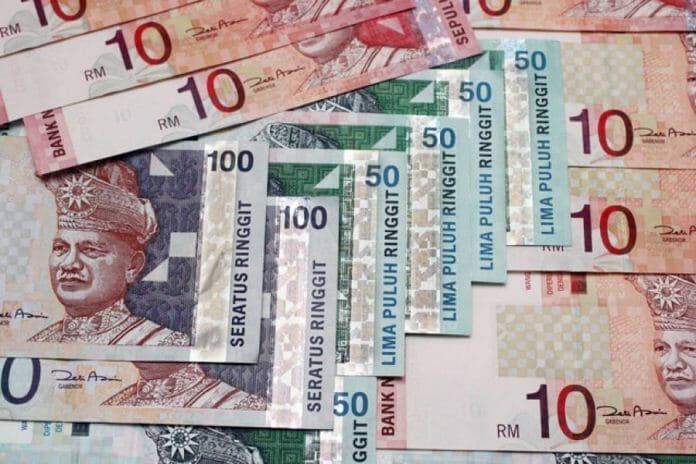The weaker ringgit has caused three groups of actors in the economy to suffer – the foreign firms exporting to Malaysia, Malaysian tourist abroad and the foreign investor in Malaysia.
Their sufferings need to be addressed. We leave the other three groups alone in their bliss with a weaker ringgit – the Malaysian exporters, foreign tourists in Malaysia and Malaysian investors abroad.
This approach is better than the opposition’s call for the government to tinker the exchange rate to make the ringgit stronger, which is a zero-sum game, as it will transform the misery of the sufferers into a state of bliss at the expense of those who are already in a blissful state with a weaker ringgit.
Let’s now focus on how the sufferings of the foreign firms exporting to Malaysia can be mitigated. When we talk about them, it includes their agents and distributors in Malaysia i.e. the local importers who also suffer.
The Malaysian authorities could negotiate with them to diversify their exports to Malaysia by increasing the imports of goods/services that’s crucial to Malaysia at competitive prices for example animal feeds while Malaysia is waiting for self-sufficiency in producing animal feeds.
Ditto with the import of food and agricultural products at competitive prices that will enhance food security, and the import of raw materials for the manufacturing of high technology products.
Since exports will flourish in a weaker ringgit environment, those local importers dealing with raw materials and products that are not crucial to Malaysia e.g. luxury goods/services should be encouraged and incentivised to become exporters of any goods/services that Malaysia’s trading partners needed most.
As for the sufferings of the Malaysian tourists abroad, this can be mitigated with the development of local tourist resorts that mimicked the overseas resorts such as a skiing resort with artificial snow.
With such resort facilities, Malaysians then don’t have to go for a hefty holiday experience abroad skiing in the snowy resort of Switzerland or the Italian Alps and Dolomites for the perfect mountain vacation with a weaker ringgit.
They can go to this expensive holiday spots when the ringgit is stronger.
Having holiday resorts that are adapted to the western environment will give the signals to more western tourists to come to Malaysia for a longer period for another purpose – saving hefty energy bills at home by leaving home for relatively longer period of vacation overseas at a time when energy prices are skyrocketing in the US and EU.
So the Malaysian tourism authorities could conduct a campaign to woo people in Japan, US and EU to stay in Malaysia as a tourists for longer period of time to avoid paying hefty energy and food bills.
Also Malaysian investors abroad who is in a blissful state with a weaker ringgit can diversify their investment in holiday resorts overseas and then give Malaysian tourists abroad a hefty discount to these places at a time when the ringgit is weaker.
The misery of the last sufferer of a weaker ringgit – the foreign investor in Malaysia – can be mitigated by giving them a hefty incentive to invest in the high technology sector of Malaysia.
Thus, a situation of a weaker ringgit is an opportunity to restructure the economy for a high technology and self-sufficient economy.
The case of Singapore with its stronger currency is a good inspiration to learn on how to avoid the pitfalls of a stronger currency.
In the 1960s and 1970s Singapore was the only industrial based country surrounded by the agricultural and commodities-based economy of its neighbours.
With its entrepot trade advantage still intact since colonial time, it went on an industrialization spree by welcoming multi-national companies (MNCs) to set base on its shores which was not fashionable at that time as most Asian countries resorted to import substitution to industrialise their economies.
Furthermore for the newly independent Asian countries then calling the foreign MNCs to operate in their countries smacked of neo-colonialism.
Turned out, Singapore’s approach was the better one and the country progressed with a relatively, not so much a strong currency, but a stable one with an industrialisation process that was very much labour intensive.
When other countries copied the Singapore model, initially this lead to a stronger Singapore dollar because it still has the edge in attracting established MNCs.
But we know from economics that if a strong currency is maintained, it will lead in the long run to an erosion of export competitiveness, thus damaging export-dependent industries which can exert significant drag on the economy over the long term, as entire industries are rendered non-competitive and thousands of jobs are lost.
This scenario, however, did not happen to Singapore as its leaders then have the foresight to restructure its economy to move up the value added chain from a labour intensive industrial economy to a capital intensive one during the 1980s and 1990s.
The good thing about this strategy is Singapore never saw its neighbours then moving towards a labour intensive industry as a competitor but instead as complementing the city-state’s move to a capital intensive industrial nation.
It never resorted to beggar-thy-neighbour policies. The idea behind beggar-thy-neighbour policies is the protection of the domestic economy by reducing imports and increasing exports – usually achieved by encouraging consumption of domestic goods over imports using protectionist policies – such as import tariffs or quotas to limit the amount of imports.
It relocated its labour intensive industries to neighbouring countries and helped them in setting up industrial parks, along with its successful ambition implemented since the 1970s to make the country a vibrant international financial hub.
With this restructuring of the economy, the Singapore dollar maintained its strong standing not only in comparison with the currencies of neighbouring countries but also with many currencies of the world.
And when the neighbouring countries decided to move up the ladder in the value added chain by doing what Singapore has done in moving to a capital intensive industrial country, the republic once again restructure its economy into a high technology one, thereby maintaining its strong currency without affecting its export competiveness.
It achieved this high-technology economy by making it a knowledge-based one.
As neighbouring countries yet again move towards a high technology economy, Singapore is restructuring its economy to a service oriented one.
Another factor that accounts for a strong Singapore dollar is when the republic chooses the exchange rate (rather than interest rates) as the principal tool of monetary policy.
This is predicated on its small size and high degree of openness to trade and capital flows.
A basic philosophy underlying Singapore’s exchange rate policy is to preserve the purchasing power of the Singapore dollar in order to maintain confidence in the currency and preserve the value of workers’ savings.
Just as some of Singapore’s particular characteristics necessitate a unique monetary policy framework, there are several structural factors, which have allowed the exchange rate to function effectively as an intermediate target of monetary policy.
First, the country’s high savings rates in the public sector due to the government’s budgetary surpluses, along with the contribution of companies and households to the mandatory CPF, have led to the continual withdrawal of liquidity from the banking system.
The Monetary Authority of Singapore (MAS) accordingly injects liquidity into the market by selling Singapore dollars and buying US dollars to offset government and CPF flows.
Secondly, MAS has gained credibility through its pre-emptive and effective policy decisions by its single-mindedness and discipline in focusing on medium-term inflation trends, coupled with its robust reserves. These have earned the trust of the market and public.
It adopts a medium- to long-term orientation in formulating monetary policy, anticipating a six- to nine-month lag between implementation and impact, which has helped in reducing the volatility of the exchange rate, anchoring the economy and providing certainty for businesses and households.
The effectiveness of Singapore’s exchange rate policy is due to the broader framework that its monetary policy is part of. Monetary policy does not work in a vacuum.
Instead, it is situated within a wider framework of sound and consistent policies, including flexible prices and wages, a deep and efficient financial market, a robust corporate sector and prudent fiscal policy.
The close coordination between fiscal and monetary policies has successfully ensured macroeconomic stability in the past decades, including meeting the challenges of past and recent financial crises.
Singapore also provides a reason why having a stronger currency is not necessarily better.
The MAS has reported a net loss of S$7.4 billion in the financial year ended 31 March 2022. Additionally, Singapore’s official foreign reserves (OFR) also recorded a net loss of S$4.7 billion for the same financial year.
The MAS OFR is held in foreign currencies, and according to MAS, three-quarter of the OFR is held in USD, euro, yen and pound, majority of which is held in USD.
A CNA report back in July said the Singdollar is performing well against the euro and pound, and is at an all-time high against the yen.
The appreciation of its currency means the republic got lesser Singdollars when translating (converting) the foreign currency into the local currency.
This is the main reason why the OFR saw a net loss of S$4.7 billion despite making a profit of S$4 billion in foreign investments.
In turn, this is the reason MAS would not be contributing to Singapore’s Consolidated Fund this year. However, it is considered as a short-term loss.
This is the first time it has not contributed in 2 years, as MAS had contributed S$2.17 billion in FY 2019/20 and S$1.07 billion in FY 2020/21.
The Consolidated Fund is just like a bank account held by the Singapore Government, of which revenues are channelled towards and out of which Government expenditures are spent.
In years of net profits, the contribution for each financial year will be paid over a period of three years to ensure the stability of the government budget.
Even though MAS will not be contributing to the Consolidated Fund, the Government will still receive S$1.1 billion due to the previous years’ profits.
Your editor is not trying to say that Singapore’s policy of maintaining a strong currency is a bad one. Overall this policy has brought tremendous benefits to the country.
It is how the negative effect of a stronger/weaker currency is mitigated that matters and according to many analysts, with a strong reserve to begin with, built up through the years, Singaporeans would not be affected that much by the loss of its OFR due to a stronger currency.
As I said earlier, a stronger or weaker currency is a different ballgame, and neither is intrinsically good or bad.
This articled is authored by Jamari Mohtar, who is the Editor of Let’s Talk!, an e-newsletter on current affairs. The views set forth are the authors own.









